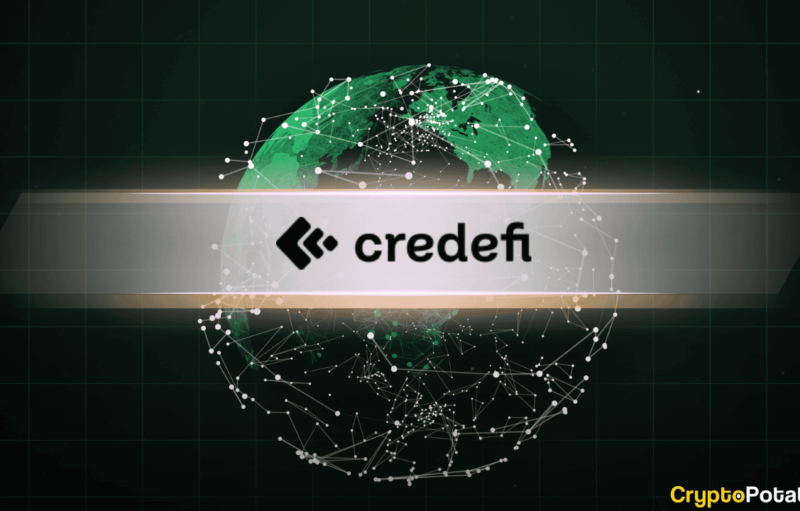
[Sponsored]
The total value of ETH locked into DeFi platforms is currently over $60 billion, a number that was in the low millions just two years ago. For decades, centralized systems have catered to those in need of financial services, but with the means to deploy applications on distributed networks came the ability to decentralize finance.
Cryptocurrency-based services are still relatively new compared to the established centralized financial systems, and there are still many hurdles for them to overcome. Blockchain is a complex system of distributed nodes that maintain the network’s integrity through effective incentivization models.
Decentralized finance is a use case that exceeds the limits of what blockchains can do, merging some of its most impressive and innovative features like smart contracts and staking into a system that generates value for the crypto-economy. Loans are a fundamental component of any economic system, and DeFi is no exception.
With the rise of decentralized exchanges, cryptocurrency staking and lending services are more accessible than they’ve ever been, and this is fueling all kinds of growth in the blockchain space. In fact, DeFi loans have been so instrumental to the industry’s growth over the last couple of years, when people look back on the most important breakthroughs to help pave the way towards mainstream adoption, they’ll probably point to the burgeoning DeFi lending and borrowing ecosystems of today.
Putting the obvious advantages of decentralized finance over its centralized counterparts aside, DeFi has a lot to offer. Not only does it allow users complete data transparency, but it’s also censorship-resistant, allowing anyone in the world to make quick, cross-border transactions at a low fee. Additionally, since the blockchain is an immutable ledger of transactions, there is verifiable proof of every action taken on the network, giving users further insight into how the system functions while preventing malicious entities from manipulating the DeFi economy.
In addition, DeFi provides faster processing times, which leads to improved loan origination speed while also offering greater consistency with lending decisions. Since the blockchain is an immutable record of transactions made on the network (including the parties involved in the trade and the amount transferred), DeFi, in time, could become fully compliant with local, state, and federal regulatory policies.
DeFi is also permissionless, meaning anyone with a smartphone can access financial services on the blockchain without considering geographic location or maintaining a minimum balance. The advent of programmable smart contracts enables the complete automation of trade execution, and with projects leaning towards blockchain interoperability, interacting with dApps on other blockchains could soon become a lot more practical.
“We’re essentially speaking the same language as Wall Street now,” said Paul Mak, CEO at Bonded.Finance, a DeFi lending platform on the Ethereum network. “Only with the type of products we are building, we’re making them faster, cheaper, more transparent, and free from human error.”
However, one of the most critical aspects of decentralized finance and the lending economy is the ability to take custody of your assets. Modern Web3 wallets are incredibly secure, ensuring DeFi investors have complete control over their investments, and with the seemingly infinite lending platforms in existence, users can also earn interest on staked assets with ease.
For instance, Maker allows users to lock collateral tokens like ETH to generate its algorithmic stablecoin DAI as yield. This encourages users to participate in the network’s operations while also letting users participate in governance decisions like changes to lending and borrowing interest rates.
Other platforms like Bonded.Finance have tapped into the lending market with pooled loans, where investors collaborate to supply the capital to borrowers and split the interest. Its first DeFi project, the Bonded Accelerator Crypto Loan, allows users to deposit collateral tokens to withdraw their funds. Using its native BOND token, holders can generate Launchpad IDO assets at no cost, acquiring tokens that are typically hard to source.
With more exotic offerings than competing platforms like Aave, Compound, and SALT Lending, Bonded.Finance caters to investors that want more risk exposure and higher yield potential. They also have some ways for investors to increase the profits, including taking a percentage of the locked assets’ appreciation in exchange for a lower lending interest rate.
Since the arrival of automated market makers (AMMs) in decentralized exchanges (DEXs), countless yield farming platforms have launched on various blockchain networks. AMM-based DEXs offer a much better experience than the decentralized exchanges of years past, but they aren’t perfect.
Access to high-leverage trading is adding to the market’s volatility. While there are plenty of reasons for leverage to stick around, such as price discovery and interest-free profits, it’s putting undue stress on the crypto economy. However, as developers continue to discover new and innovative ways to advance these decentralized platforms, and with institutional investors frothing at the mouth for DeFi, the traditional financial system might soon lend itself to the blockchain.
Binance Futures 50 USDT FREE Voucher: Use this link to register & get 10% off fees and 50 USDT when trading 500 USDT (limited offer).
PrimeXBT Special Offer: Use this link to register & enter POTATO50 code to get 50% free bonus on any deposit up to 1 BTC.
The post appeared first on CryptoPotato






